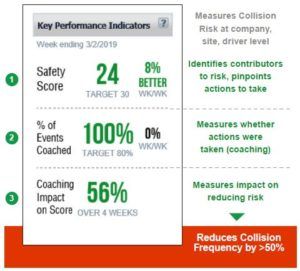
Operating in the New Normal – Part 5
Hiring & Rewarding Heroes
Operating in the new normal means ensuring you have drivers for your vehicles. Whether it’s due to increased demand, drivers who are sick or simply dealing with the driver shortage the industry was experiencing before the pandemic, it’s important you do everything possible to hire safe drivers and train new drivers to be as safe as possible on the road. This is particularly important as the FMCSA has put multiple exemptions in place to make it easier for people to continue earning CDLs in the time of social distancing, including no longer requiring a skills test examiner to be present in the vehicle during the test.
With everyone’s priorities continually changing, it’s impossible to be in the cab with every new driver. Yet, it’s paramount that your new drivers have all the safety training they need, they’ve actually learned the training and continue the lessons learned when on the road. One of the best ways to train drivers is with a video-based safety program. By combining the power of an intuitive coaching workflow with a fully managed service, you can help your new drivers learn skills – and maintain them. Ultimately reducing collision frequency, lowering fuel consumption and operational costs, and ensuring they return home when their job is done. 
In addition, it’s important to continually incentivize your front-line workers as they face increased danger. A well-implemented driver incentive program can provide a considerable positive return on investment as a result of improved driver safety and reduced accidents — while greatly enhancing driver recruitment and retention.
No matter what type of incentive program you implement, it’s important to have Key Performance Indicators (KPIs) to help drive your performance. KPIs are the backbone of a data-driven incentive program as they allow fleet managers to measure a driver’s performance and compare it to a previous period or the output of other drivers. Performance metrics are also a way for fleets to communicate what’s important to their drivers. If fleets are measuring the wrong data, drivers will focus on those areas that don’t impact performance. The most effective metrics are based on a fleet’s safety/operational efficiency goals and are intended to impact driver behavior and performance.
Ultimately, any driver incentive program needs to drive better driver performance and retention in order to pay for itself via cost savings coming from reduced accidents, workers compensation payouts, insurance premiums and more.
Let us help you outline a driver incentive program that works for your fleet by downloading our popular eBooks, Highly Effective Secrets to Building a Successful Data-Driven Driver Incentive Program and Paying for Safety.
- Posted by Melissa.Senoff@smartdrive.net
- On 28 May 2020
